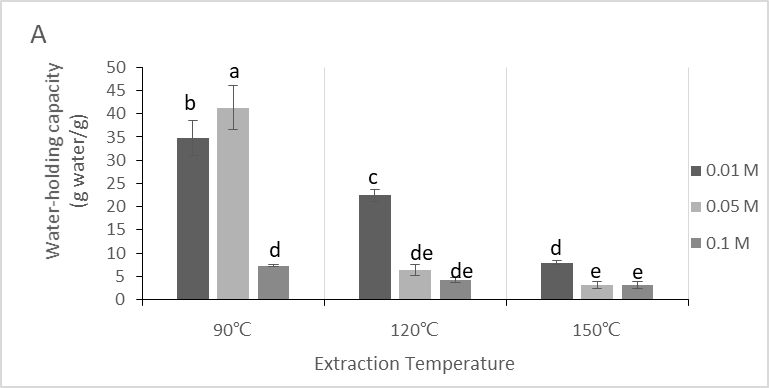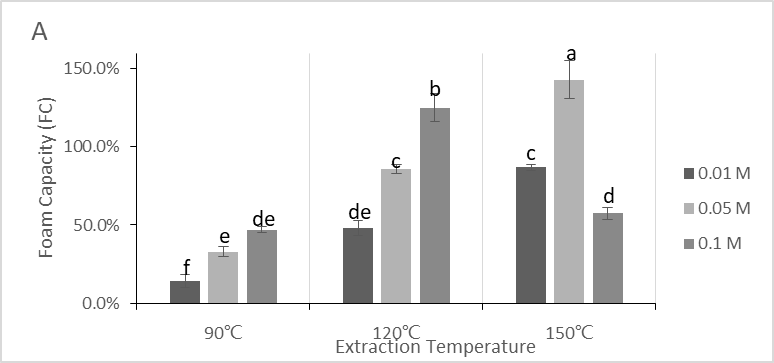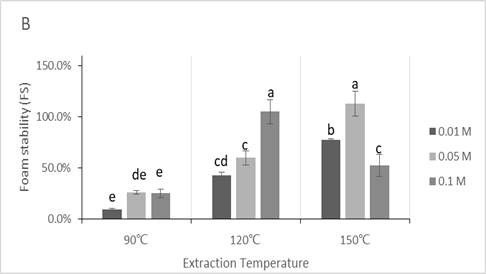
Links
Tobacco Research Institute of CAAS Has Made New Progress on Polysaccharides Extracted from Ulva prolifera
Recently, Innovation Team of Utilisation and Protection of Marine Mudflat Bio-resources, Tobacco Research Institute of CAAS, has achieved a new progress on the Ulva prolifera polysaccharides extraction technology and its functional activity. The results were published online at "Carbohydrate Polymers” in December 2017, and the impact factor of the journal is 4.811.
Since 2008, as a result of global climate change and eutrophication of water bodies, large-scale green algae Ulva prolifera has proliferated in the coastal areas of Yellow Sea (China), threatening the development of coastal fisheries and tourism. How to make effective use of Ulva resources and convert this abundant waste into valuable products has become an important issue. Previous study has found that Ulva species are rich in carbohydrates, protein, crude fiber, amino acids, fatty acids, vitamins and minerals, and Ulva polysaccharides with a variety of biological activity has a good application prospect in functional food, pharmaceutical and other industries.
For the first time, our team used microwave assisted hydrothermal extraction technology for extracting sulfated polysaccharides from Ulva prolifera in a short time. The characterization of polysaccharides showed that the chemical composition and molecular weight were greatly influenced by extraction conditions, resulting in different functional properties and bioactivities of polysaccharides from different conditions. Polysaccharides extracted from 90 ℃, 0.05 M HCl had best water-holding capacity (41.32 g/g) and oil-holding capacity (15.09 g/g)(Figure 1), while polysaccharides from 150 ℃, 0.05 M HCl has best foaming properties (FC 143% and FS 113%, respectively)(Figure 2). In addition, polysaccharides from 150 ℃, 0.1 M HCl exhibited highest antioxidant activity and pancreatic lipase inhibition activity. To conclude, polysaccharides with different compositions and properties could be prepared by modulating the fast microwave assisted hydrothermal extraction conditions, and Ulva prolifera presents a promising natural feedstock of functional food ingredients, antioxidants and anti-hyperlipidemic agents. The results of this study provide a theoretical basis for the comprehensive utilization of high Ulva resources.
The research has been funded by the Chinese Academy of Agricultural Science and Technology Innovation Project. Yuan Yuan was the first author, Cheng-sheng Zhang and Yi-qiang Li were co-Corresponding authors.
Article link: https://www.sciencedirect.com/science/article/pii/S0144861717313474


Figure 1. Water-holding and oil-holding capacities of polysaccharides (A) Water-holding capacity (WHC) of polysaccharides (B) Oil-holding capacity (OHC) of polysaccharides. The results were expressed as mean value ± SD (n = 3). Different letters within the same figure mean statistical difference (p<0.05).


Figure 2. Foaming properties of polysaccharides (A) Foam capacity (FC) of polysaccharides (B) Foam stability (FS) of polysaccharides. The results were expressed as mean value ± SD (n = 3). Different letters within the same figure mean statistical difference (p<0.05).